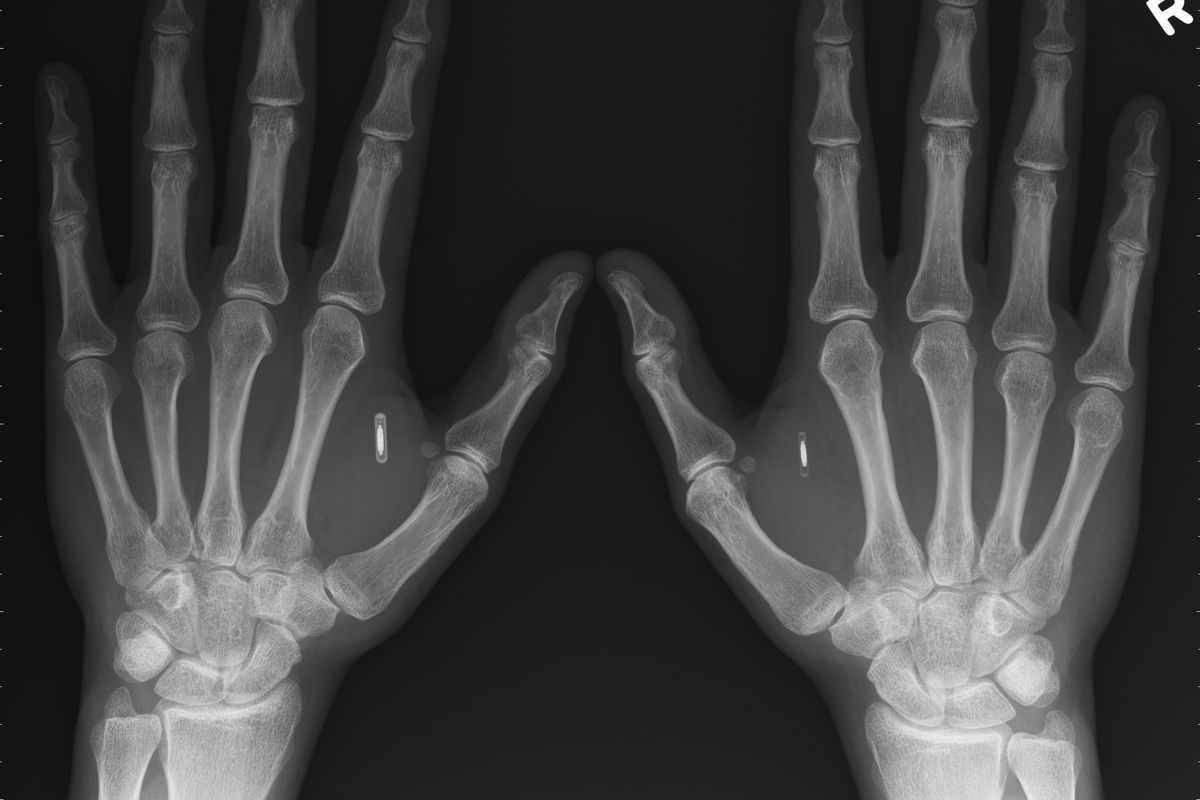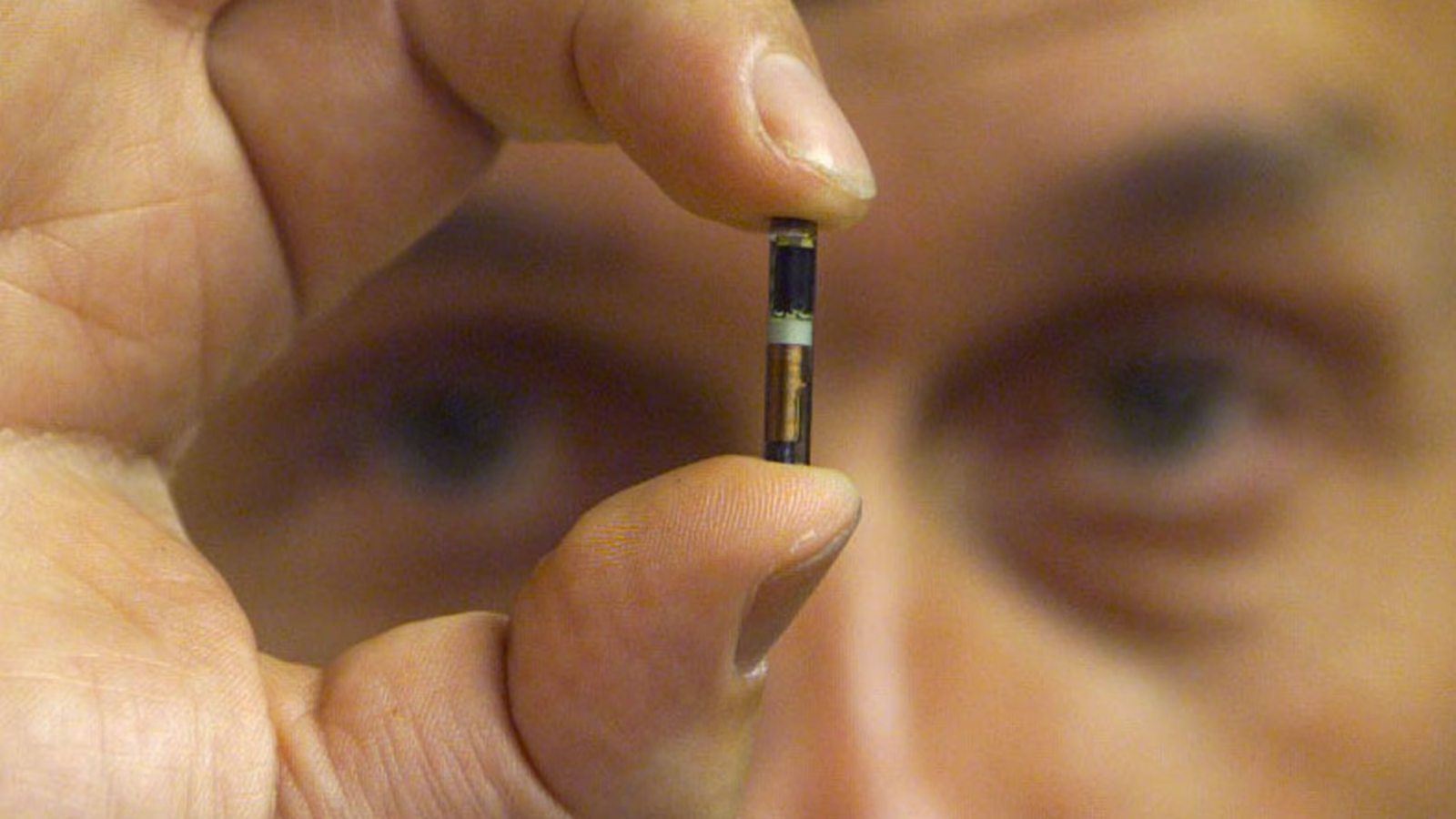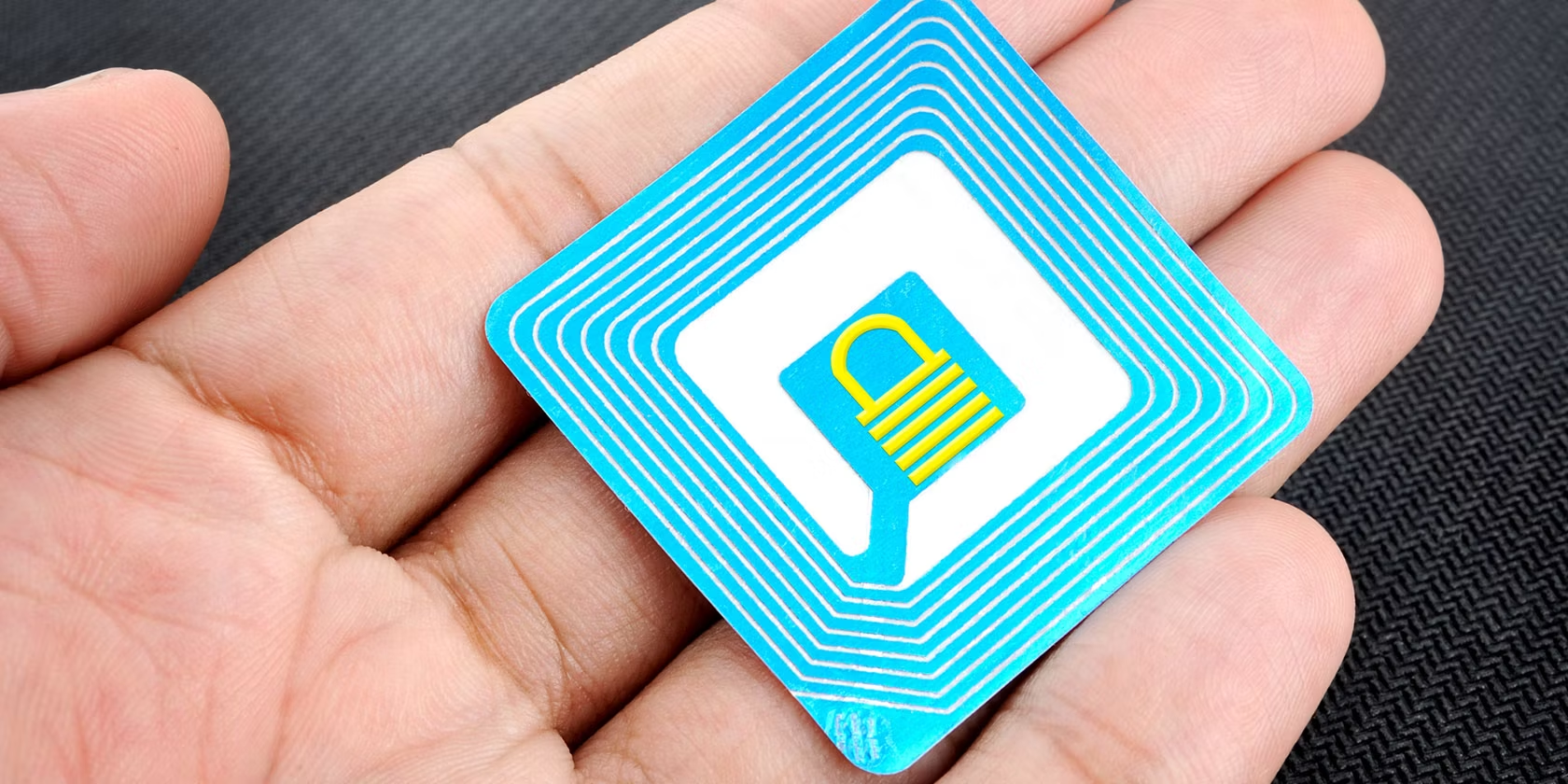What Is RFID?
Radio Frequency Identification (RFID) is a technology that uses radio waves to identify and track objects or individuals. It consists of small electronic devices called RFID tags, which contain a unique identifier and can transmit data wirelessly to an RFID reader. These tags can be attached to or embedded within various items, such as products, vehicles, or even living beings.
The basic principle behind RFID technology is the ability of the RFID reader to communicate with the RFID tags through radio waves. The reader sends out a signal, which is received by the tags in the vicinity. The tag then responds by transmitting its stored data to the reader, enabling the identification and tracking of the tagged item or individual.
RFID technology offers several advantages over traditional identification and tracking systems. It provides a non-contact method of data capture, as the tags can be read without requiring direct line-of-sight or physical contact. This makes RFID suitable for a wide range of applications, including inventory management, supply chain logistics, access control, and even in medical and healthcare settings.
Furthermore, RFID systems can operate in various frequency ranges, allowing for flexibility in their deployment. Low-frequency (LF) RFID operates at frequencies below 135 kHz and is commonly used for short-range applications, such as access control systems. High-frequency (HF) RFID operates at frequencies from 13.56 MHz and is often used for item tracking and contactless payment systems. Finally, ultra-high-frequency (UHF) RFID operates at frequencies from 860 to 960 MHz and is suitable for long-range applications, such as inventory management.
Overall, RFID technology revolutionizes the way information is gathered and processed in various industries. It enhances operational efficiency, improves inventory management accuracy, and enhances security measures. The widespread adoption of RFID technology continues to drive innovation and contribute to advancements in fields such as retail, logistics, healthcare, and beyond.
How Does RFID Work?
RFID technology operates through a simple process that involves three main components: RFID tags, RFID readers, and a backend system for data management. The tags, also known as transponders, contain a unique identifier and can transmit data wirelessly. The readers, on the other hand, are devices that can send and receive signals to communicate with the tags. Here is a breakdown of how RFID works:
1. Tag Initialization: Before deployment, each RFID tag is programmed with a unique identifier or serial number. This identifier is what distinguishes one tag from another.
2. Tag Detection: When an RFID reader is within range of an RFID tag, it sends out a radio frequency signal, also known as an interrogation signal.
3. Tag Response: Upon receiving the interrogation signal, the RFID tag activates and responds by transmitting its unique identifier back to the reader.
4. Data Capture: The RFID reader captures the transmitted data from the tag and forwards it to the backend system for processing. Depending on the application, this data can include information about the tagged item itself, such as its location, status, or other relevant details.
5. Data Processing: The backend system processes the received data and performs any necessary actions, such as updating inventory records, triggering alerts, or generating reports. This system can be a local server or a cloud-based platform, depending on the requirements of the RFID implementation.
It is important to note that RFID technology can operate using different frequencies depending on the application. The choice of frequency depends on factors such as the required range, data transmission speed, and environmental conditions.
Overall, RFID technology streamlines the process of identification and data capture, providing real-time visibility and accurate tracking capabilities. It eliminates the need for manual scanning or line-of-sight interactions, enabling faster and more efficient operations in various industries.
Types of RFID Tags
RFID tags come in various forms, each designed to meet different requirements and application scenarios. Here are the most common types of RFID tags:
1. Passive RFID Tags: These tags are the most commonly used and cost-effective. They do not have an internal power source and rely on the energy emitted by the RFID reader to activate and transmit their data. Passive tags are lightweight and typically have a shorter read range compared to active tags. They are commonly used in applications such as inventory management, supply chain tracking, and asset tracking.
2. Active RFID Tags: Active tags have their own power source, usually a battery, which allows them to transmit data independently. This gives them a longer read range and the ability to continuously transmit data at regular intervals. Active tags are ideal for tracking high-value assets or monitoring items in large areas. They are commonly used in logistics, transportation, and real-time location systems.
3. Semi-Passive RFID Tags: Also known as battery-assisted passive (BAP) tags, semi-passive tags have a small internal battery that powers specific functions, such as sensor readings or extended read ranges. These tags combine the advantages of passive and active tags, offering longer battery life compared to active tags while still utilizing the RFID reader’s energy to operate. Semi-passive tags are commonly used in applications such as temperature monitoring, perishable goods tracking, and environmental sensing.
4. RFID Inlays: RFID inlays consist of an RFID chip attached to an antenna, typically printed or etched on a substrate material. Inlays are flexible and can be easily embedded into various objects or materials, such as labels, cards, or packaging. They provide a cost-effective solution for adding RFID functionality to existing products or enabling RFID-based identification and tracking.
5. Metal-Mount RFID Tags: Traditional RFID tags may not work effectively when attached to metal surfaces due to interference. Metal-mount RFID tags are designed specifically to overcome this challenge and are equipped with special components that allow them to function reliably on metallic objects. These tags are commonly used in industries such as manufacturing, automotive, and construction.
6. NFC Tags: Near Field Communication (NFC) tags are a specific type of RFID tag that operates at HF frequencies and is designed for short-range communication. NFC tags are commonly found in smartphones, contactless payment systems, and access control applications. They enable easy and secure communication between devices, making them suitable for applications such as mobile ticketing, contactless payments, and smart packaging.
Overall, the choice of RFID tag depends on factors such as read range, power requirements, environmental conditions, and the specific needs of the application. Understanding the different types of RFID tags enables organizations to select the most appropriate solution for their unique requirements.
Applications of RFID Technology
RFID technology has a wide range of applications across various industries, revolutionizing processes, enhancing efficiency, and enabling new possibilities. Here are some key areas where RFID technology is implemented:
1. Inventory Management: RFID technology offers real-time visibility and accurate tracking capabilities, making it ideal for inventory management. By tagging items and using RFID readers, businesses can easily track and locate inventory, improving inventory accuracy, reducing stockouts, and minimizing manual labor.
2. Supply Chain and Logistics: RFID enables efficient supply chain management by providing end-to-end visibility, automating product tracking, and streamlining logistics operations. It enhances shipment accuracy, optimizes inventory levels, and improves overall supply chain efficiency.
3. Retail Industry: RFID is utilized in retail for inventory management, reducing out-of-stock situations, and enhancing the shopping experience. RFID tags placed on products enable quick and accurate inventory counts, resulting in improved stock management and more efficient replenishment processes. Additionally, RFID-enabled payment systems, such as contactless payment cards, enhance transaction speed and convenience.
4. Access Control and Security: RFID technology is widely used for access control and security systems. RFID cards or fobs can replace traditional keys or passwords, allowing authorized individuals easy and secure access to buildings, rooms, or restricted areas. It provides enhanced security measures by monitoring and logging access events in real time.
5. Healthcare and Pharmaceuticals: RFID technology is utilized in healthcare settings to improve patient safety, streamline asset management, and enhance medication tracking. RFID tags can be attached to medical equipment, patient wristbands, or medication containers to ensure proper identification, accurate inventory management, and efficient tracking of critical assets.
6. Livestock and Agriculture: RFID tags are used in the livestock industry for animal identification, tracking, and management. They enable farmers to maintain accurate records of livestock health, location, and breeding history. In the agriculture sector, RFID is used to track and trace products from farm to shelf, ensuring food safety, quality control, and supply chain transparency.
7. Airports and Transportation: RFID technology provides efficient baggage tracking and airport security. RFID tags attached to baggage allow for automated sorting and tracking, reducing the risk of lost luggage. Additionally, RFID-enabled smart cards or tickets are used for contactless ticketing, allowing for faster passenger processing and seamless travel experiences.
8. Waste Management: RFID tags are utilized in waste management systems to provide accurate bin identification and monitoring. RFID technology enables efficient waste collection, reduces costs associated with waste disposal, and enhances recycling processes.
These are just a few examples of the many applications of RFID technology. As the technology continues to evolve, we can expect to see its implementation in more industries, driving innovation and improving operational efficiency.
The RFID Implant
The concept of implanting RFID technology directly into the human body has gained attention in recent years. The RFID implant, also known as a biochip or microchip implant, is a small electronic device that is inserted under the skin. It contains an RFID chip and antenna that allow it to communicate wirelessly with RFID readers. While still considered a niche application, the RFID implant has generated both interest and controversy. Here are some key points about the RFID implant:
1. Purpose and Function: The RFID implant is primarily used for personal identification and access control purposes. It enables individuals to securely authenticate their identity by simply waving their hand or arm near an RFID reader. In some cases, the implant can also be used to store personal information, medical records, or financial data. However, it is important to note that the capabilities and functionality of RFID implants are limited and vary based on design and implementation.
2. Insertion Process: The RFID implant is typically inserted under the skin using a needle-like instrument. The procedure is generally quick and relatively painless, similar to receiving a vaccination. The implant is usually placed in the fleshy area between the thumb and forefinger or on the back of the hand. Once inserted, the implant becomes a permanent part of the individual’s body.
3. Technological Considerations: RFID implants use passive RFID technology, similar to traditional RFID tags. They rely on an external RFID reader to provide the necessary energy for operation. When in close proximity to an RFID reader, the implant is powered and can transmit its unique identifier or other stored data. The range at which the implant can be read varies depending on factors such as the strength of the RFID reader and the location of the implant within the body.
4. Privacy and Security Concerns: The use of RFID implants raises valid privacy and security concerns. Critics argue that these implants could potentially be used for unauthorized tracking or surveillance, leading to violations of personal privacy. Additionally, there are concerns about the security of the data stored within the implant and the potential for hacking or unauthorized access. Regulations regarding the use of RFID implants vary by country, and it is important for individuals considering such implants to carefully consider the potential risks and implications.
5. Limited Adoption and Controversy: While there are individuals who voluntarily choose to have an RFID implant, the adoption of this technology remains limited. The ethical, legal, and sociopolitical implications of implanting technology into the human body have sparked controversy and debate. Some argue that RFID implants have medical, safety, or convenience benefits, while others express concerns about potential abuses or unintended consequences.
It is worth noting that the use of RFID implants raises important ethical and societal questions that need to be carefully evaluated. As with any emerging technology, a balance must be struck between potential benefits and the protection of individual rights and privacy.
How Is The RFID Implant Inserted?
The process of inserting an RFID implant is relatively straightforward and minimally invasive. Here is an overview of how the RFID implant is typically inserted:
1. Preparation: Before the insertion procedure, the area where the implant will be placed is thoroughly cleaned and sterilized. This helps reduce the risk of infection.
2. Anesthesia: Local anesthesia is commonly used to numb the area where the RFID implant will be inserted. This helps minimize any discomfort or pain during the procedure.
3. Incision: Using a sterile needle or a specialized insertion instrument, a small incision is made in the skin at the chosen implantation site. The size of the incision is typically around 2-3mm.
4. Insertion: The RFID implant, which is housed in a biocompatible casing, is inserted into the incision. The implant is carefully positioned under the skin, ensuring that it is securely lodged in place.
5. Closure: Depending on the specific procedure and preference of the person performing the implantation, the incision may or may not require closure with sutures or adhesive strips. In many cases, the small incision is left to heal naturally without the need for stitches.
6. Bandaging and Aftercare: Once the implant is inserted, a sterile dressing or bandage may be applied to protect the incision site. Instructions for aftercare, such as keeping the area clean and avoiding excessive movement or pressure on the implant site, are typically provided.
It is important to note that the insertion of an RFID implant should be performed by a trained professional, such as a medical practitioner or body modification specialist, to reduce the risk of complications or infections. Adhering to proper sterile techniques and following post-insertion care instructions can help promote proper healing and minimize potential risks.
Individuals considering an RFID implant should carefully research and select a reputable professional who has experience in performing such procedures. Consulting with a healthcare provider or seeking advice from experts in the field can also provide valuable guidance and information.
Benefits of RFID Implants
RFID implants offer potential benefits for individuals who choose to adopt this technology. While there are varying opinions on the use of RFID implants, proponents highlight several advantages. Here are some potential benefits of RFID implants:
1. Ease of Authentication: One of the main benefits of RFID implants is the convenience they provide for personal identification and authentication. With a simple wave of the hand or arm near an RFID reader, individuals can securely confirm their identity, eliminating the need for physical identification cards or passwords. This ease of authentication can streamline processes in various sectors, including access control, payments, and secure data access.
2. Improved Medical Care: RFID implants have the potential to enhance medical care by securely storing important medical information. For individuals with chronic conditions or allergies, these implants can provide immediate access to critical medical data in emergency situations when traditional medical records may not be readily available. RFID implants can also facilitate personalized healthcare treatments by securely storing medication data, dosage information, and treatment plans.
3. Enhanced Security: RFID implants can offer an additional layer of security for individuals and their personal belongings. Unlike physical identification cards or keys, RFID implants are difficult to replicate or counterfeit. This can help prevent unauthorized access to restricted areas, secure devices or systems, and protect valuable assets, improving overall security measures.
4. Contactless Payments: One practical application of RFID implants is the convenience they offer for contactless payments. By linking the implant to a payment account, individuals can make quick and secure transactions with a wave of their hand. This eliminates the need to carry physical wallets or cards and reduces the risk of theft or loss.
5. Personal Tracking: RFID implants can be used for personal tracking, providing individuals with the ability to locate loved ones or track children or pets. In cases of emergency or when safety is a concern, having real-time tracking information can offer peace of mind and potentially save lives.
6. Integration with Internet of Things (IoT): RFID implants can be integrated with the Internet of Things (IoT), allowing individuals to seamlessly interact with connected devices and smart environments. For example, an RFID implant could be used to unlock a smart home door, control connected appliances, or access personalized settings tailored to an individual’s preferences.
While these benefits are compelling, it is crucial to consider the potential risks, privacy concerns, and ethical implications associated with RFID implants. Making an informed decision and weighing the potential benefits against individual preferences and concerns are important factors to consider before opting for an RFID implant.
Controversies and Concerns
The use of RFID implants has sparked debates and raised various controversies and concerns. While some individuals embrace the technology, others harbor reservations and question its implications. Here are some key controversies and concerns surrounding RFID implants:
1. Privacy and Security: One of the primary concerns with RFID implants is the potential threat to privacy and security. There are concerns that the personal data stored in the implant could be vulnerable to unauthorized access or hacking. Additionally, critics argue that widespread adoption of RFID implants could lead to increased surveillance, tracking, and potential abuses of personal information.
2. Ethical Considerations: The concept of implanting technology into the human body raises ethical questions. Critics argue that the increasing integration of technology into human biology blurs the line between human and machine, raising concerns about the potential loss of personal autonomy and bodily sovereignty. Additionally, the ethical implications of using RFID implants for non-medical purposes and the potential for coercion or exploitation are subjects of ongoing ethical debate.
3. Health Risks: While RFID implants are generally considered safe, there are concerns about potential health risks. Some studies suggest that the electromagnetic fields generated by RFID technology could potentially interfere with the normal functioning of the human body. However, the current evidence is inconclusive, and further research is needed to fully understand any potential long-term health impacts.
4. Legal and Regulatory Issues: The use of RFID implants raises legal and regulatory questions regarding consent, data protection, and ownership of personal information. Laws regarding the collection, storage, and use of data vary across countries, and there is a need for clear regulations to ensure the protection of individuals’ rights and privacy in relation to RFID implants.
5. Social Acceptance and Stigma: RFID implants face challenges in terms of social acceptance and overcoming the stigma associated with “cyborg” or biohacking. Widespread adoption may be hindered by cultural or societal norms, as well as concerns surrounding the impact on personal relationships, employment, and discrimination based on implant status.
6. Invasiveness and Removability: While RFID implants are considered relatively simple procedures, concerns exist about the invasiveness of the implantation process and the potential difficulties associated with removing the implant if desired. The permanence of the implant raises questions about the ability to change or upgrade the technology in the future.
It is crucial to have open and transparent discussions surrounding the controversies and concerns associated with RFID implants. The proper consideration of ethical, legal, and societal implications is essential in order to strike a balance between the potential benefits and the protection of individual rights, privacy, and bodily integrity.
Conclusion
RFID technology has revolutionized various industries, offering numerous benefits such as improved inventory management, enhanced security, and streamlined processes. The notion of RFID implants has additionally emerged, attracting both interest and controversy. While RFID implants offer potential conveniences and advancements, they also raise valid concerns regarding privacy, security, ethics, and health risks.
Individuals considering RFID implants should carefully weigh the potential benefits against the associated risks and concerns. It is essential to stay informed, research reputable professionals, and consult with healthcare providers or experts in the field to make informed decisions.
As technology continues to advance, ongoing discussions and critical analyses are necessary to address the ethical, legal, and social implications of RFID implants. Clear regulations should be established to protect individuals’ rights, privacy, and personal autonomy.
RFID technology, including the use of implants, holds potential for various applications. However, it is crucial to strike a balance between technological advancements and the preservation of individual rights, privacy, and bodily integrity. By navigating these challenges and considering the broader societal implications, we can utilize RFID technology responsibly and ethically to improve the quality of our lives and the efficiency of our systems.

























